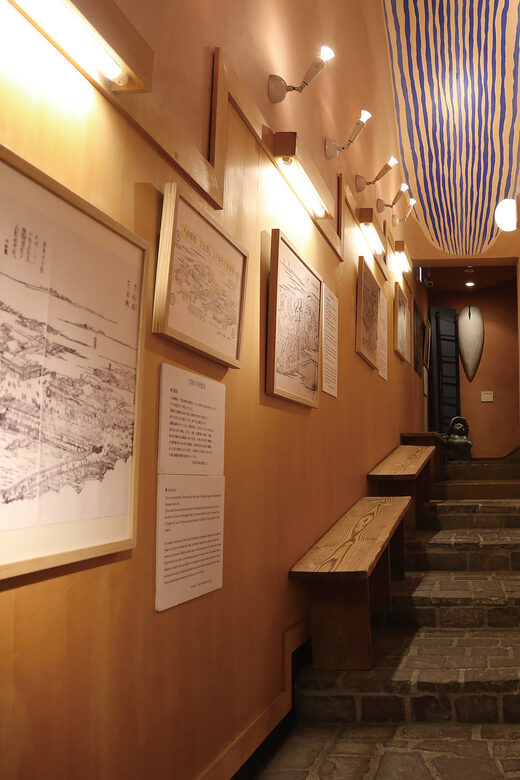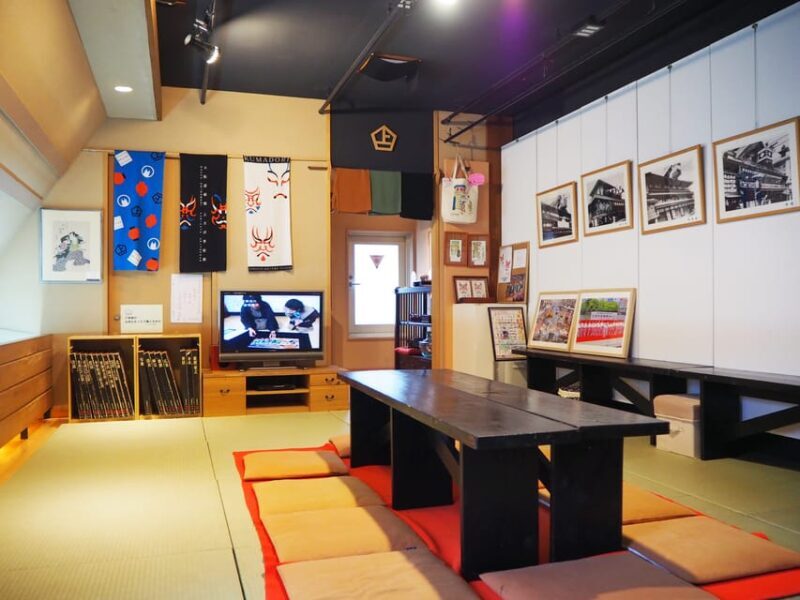If you’re wandering through Osaka’s vibrant Dotonbori district, a visit to the Kamigata Ukiyo-e Museum offers a glimpse into a world of traditional Japanese woodblock prints that beautifully capture the essence of Osaka’s theater and kabuki culture. For only $4.72, this small but captivating museum provides an affordable way to connect with the city’s historic artistic expressions. It’s an open ticket experience—meaning you can go any time during their open days within three months of booking, making it flexible to fit into your busy itinerary.
What makes this experience stand out? First, the collection of Kamigata ukiyo-e prints featuring kabuki actors tied directly to Osaka’s cultural scene. Second, the artworks adorned with gold, silver, and copper powders showcase a level of craftsmanship that’s impressive even to those unfamiliar with traditional printmaking. However, keep in mind that during peak times, there might be a wait to get inside. This museum suits anyone interested in Japanese art, theater history, or authentic cultural experiences—especially those who appreciate intricate craftsmanship and vibrant history.
Key Points

- Affordable entry with a stunning collection of ukiyo-e prints.
- Located in Dotonbori, the heart of Osaka’s entertainment and theater district.
- Features unique prints decorated with precious metals like gold, silver, and copper.
- Educational exhibits explain the techniques and history behind Kamigata ukiyo-e.
- Children under 3 enter for free, making it family-friendly.
- Open ticket system, offering flexible visits within three months.
An In-Depth Look at the Kamigata Ukiyo-e Museum

Museum lover? We've covered these other cultural institutions in Kamigata Ukiyoe Museum
Location and First Impressions
Situated in the lively Dotonbori area, this museum is perfectly placed for those exploring Osaka’s entertainment hub. The moment you step into the museum, the focus on specifics of Osaka’s cultural identity is clear—this is not a generic Japanese art museum. Instead, it zeroes in on Kamigata ukiyo-e—the Osaka version of the traditional woodblock print art form, distinct from Edo (Tokyo) styles.
What’s Inside?
The core of the museum is its collection of ukiyo-e prints depicting kabuki actors—a genre that celebrates Osaka’s reputation as a theater city. We loved the way the prints capture the vibrant personalities of performers, showcasing their costumes and expressions with vivid detail. One reviewer pointed out that the prints adorned with metallic powders are especially striking, adding a luxurious, shimmering effect that elevates the artwork from mere paper to a kind of visual treasure.
The museum also offers engaging exhibits that detail the production techniques—from the carving of the woodblocks to the careful application of colors and metallic powders. This educational aspect is particularly enjoyable for those interested in traditional craftsmanship. We appreciated how the information was presented in a clear, accessible way, making the art form approachable for newcomers.
The Artistic Significance
Unlike the more widely known Edo ukiyo-e, Kamigata prints are celebrated for their connection to Osaka’s lively **theater scene. The prints serve as both art and social commentary, depicting not just actors but also scenes from theaters, courtesans, and city life. This specificity creates a rich, local flavor that makes the museum a true window into Osaka’s cultural soul.
More Great Tours NearbyPractical Aspects and Visiting Tips
- Admission is straightforward—bring your QR code voucher and show it at the ticket window.
- The museum is closed every Monday, so plan your visit accordingly.
- If visiting during holidays, it may be closed the following day if Monday falls on a holiday.
- The museum is small but packed with details, so take your time to explore each exhibit rather than rushing.
- Photography is allowed, but avoid flash and large equipment to respect other visitors and the artworks.
- Children under 3 enter for free, and kids under 13 need to be accompanied by an adult.
What We Loved
The intricacy of the prints and the use of metallic powders stand out as the highlights. The shimmering gold and silver accents bring the images to life, especially in subdued lighting, creating a feeling of seeing Osaka’s theatrical glamour on paper. Also, the location in Dotonbori makes it easy to combine this visit with other sightseeing—dining, shopping, or catching a show in the district.
Possible Drawbacks
You might find the museum a bit small if you’re expecting a large, sprawling gallery. During peak hours, there could be a wait, and some might prefer a more guided experience. But the flexibility of the open ticket helps mitigate this, letting you choose a quiet time to enjoy the exhibits.
Who Should Visit?

This museum appeals most to art lovers, history buffs, and anyone curious about Japanese theater and local cultural expression. Families with children under 3 will appreciate the free entry, and those who enjoy authentic, off-the-beaten-path experiences will find this a worthwhile stop. It’s especially suited for those who want a deep dive into Osaka’s artistic scene without spending a lot of money.
Final Thoughts

The Kamigata Ukiyo-e Museum offers a focused, authentic look at Osaka’s theatrical art. The expertly crafted prints, especially those with metallic accents, make for a memorable visual experience. The museum’s location in Dotonbori allows you to seamlessly blend cultural discovery with the lively, energetic atmosphere of Osaka’s entertainment district. Its affordable price point makes it accessible for all budgets, and the open ticket system adds needed flexibility in busy travel schedules.
If you’re interested in traditional Japanese arts, theater history, or local craftsmanship, this museum provides both visual delight and meaningful insights—without requiring a huge time investment or hefty entrance fee. Perfect for a quick cultural fix in Osaka, it’s a hidden gem worth seeking out.
FAQ

Is the ticket for the Kamigata Ukiyo-e Museum a one-time entry?
Yes, your ticket is valid as an open ticket within three months of purchase, allowing you to visit on your schedule.
Do I need to pick a specific date when booking?
No, you don’t need to specify a date. Just show your voucher when you arrive.
Can children enter for free?
Yes, children under 3 years old enter free, and those under 13 must be accompanied by an adult.
Is the museum accessible during holidays?
The museum is closed every Monday, or the following day if Monday is a holiday.
What should I bring?
Bring your QR code voucher. No additional tickets or ID are generally required, but student ID may be needed for students.
Is photography allowed inside?
Yes, photography is permitted, but flash and large equipment are prohibited to protect the artworks.
How long does a typical visit take?
Since the museum is small but detailed, a visit typically lasts 30 minutes to an hour—perfect for a quick cultural stop.
Is there a guided tour?
No guided tour is included, but the exhibits are self-explanatory and educational.
What’s the best time to visit?
Try to visit during non-peak hours to avoid crowds—early mornings or late afternoons are usually quieter.
Can I combine this with other attractions?
Absolutely. Its central Dotonbori location makes it easy to pair with nearby sights, shops, and restaurants.
This review aims to give you a clear, honest picture of what to expect at the Kamigata Ukiyo-e Museum. Whether you’re an art enthusiast or just looking for a meaningful cultural experience in Osaka, this museum offers a charming, affordable window into Japan’s traditional printmaking and performance arts.
You can check availability for your dates here: